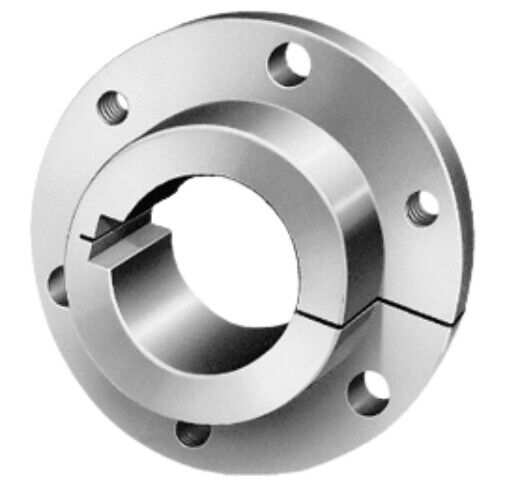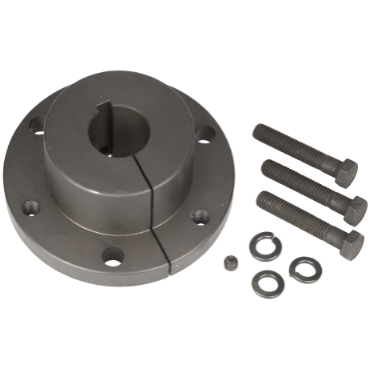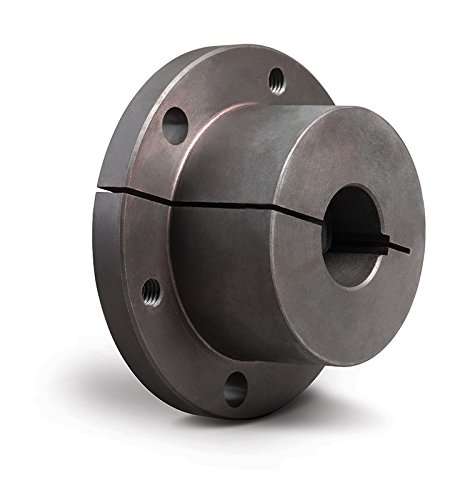
Can I find educational resources on the history and evolution of QD bushing technology?
If you are interested in learning about the history and evolution of QD (Quick Disconnect) bushing technology, there are educational resources available that can provide valuable insights. These resources can help you understand the development, advancements, and applications of QD bushings over time. Here are some avenues to explore:
- Manufacturer Websites: Some manufacturers of QD bushings provide educational resources on their websites. They may have sections dedicated to the history and evolution of their products, including QD bushings. These resources can include articles, whitepapers, or technical documentation that discuss the development of QD bushing technology and its various iterations. Visiting the websites of reputable manufacturers in the power transmission industry can provide you with valuable information.
- Industry Publications and Magazines: Trade publications and industry magazines often feature articles and case studies that delve into the historical aspects of industrial technologies. Publications such as Mechanical Engineering, Machine Design, or Power Transmission Engineering may cover topics related to QD bushing technology. Exploring their archives or conducting targeted searches can help you find informative articles on the subject.
- Engineering Books and Textbooks: Engineering books and textbooks on mechanical power transmission, machine design, or industrial components may contain chapters or sections dedicated to QD bushings. These resources can provide in-depth explanations of the technology’s history, design principles, and applications. Searching for relevant books in libraries, online bookstores, or academic databases can help you access comprehensive educational material.
- Technical Forums and Online Communities: Online technical forums and communities, such as engineering forums or mechanical engineering subreddits, can be valuable sources for discussions on the history and evolution of QD bushing technology. Engaging with professionals, engineers, and enthusiasts in these communities can provide you with insights, personal experiences, and references to further educational resources.
- Academic Research Papers: Academic research papers and journals in the fields of mechanical engineering, industrial engineering, or power transmission may contain studies or analyses related to QD bushing technology. Platforms like IEEE Xplore, Google Scholar, or academic databases provided by universities or research institutions can help you find scholarly articles that explore the historical aspects, design improvements, or performance evaluations of QD bushings.
When exploring these educational resources, it’s important to critically evaluate the information and cross-reference it with multiple sources. The history and evolution of QD bushing technology may vary depending on the specific manufacturer, region, or application. By gathering information from various reputable sources, you can develop a comprehensive understanding of the subject.
By utilizing these educational resources, you can gain knowledge about the history and evolution of QD bushing technology, enabling you to appreciate the advancements and applications of this important component in the field of mechanical power transmission.

Can I get advice on selecting the right QD bushings based on torque, speed, and load requirements?
When selecting the right QD (Quick Disconnect) bushings based on torque, speed, and load requirements, it is crucial to consider several factors to ensure optimal performance and compatibility. Here is some advice to guide you in the selection process:
- Torque Capacity: Determine the maximum torque that will be transmitted through the QD bushing in your application. This can be influenced by factors such as the power source, driven component, and operating conditions. Check the manufacturer’s specifications for the QD bushing’s torque capacity rating. It is important to choose a QD bushing that can handle the anticipated torque without exceeding its limits to ensure reliable and safe operation.
- Speed Limitations: Consider the rotational speed or RPM (revolutions per minute) at which the QD bushing will operate. Higher speeds can generate centrifugal forces, which can affect the performance and stability of the bushing. Verify the manufacturer’s specifications for the maximum recommended speed rating of the QD bushing. Ensure that the selected bushing can handle the anticipated speed without compromising its integrity or causing excessive wear.
- Load Requirements: Evaluate the applied load on the QD bushing, including axial, radial, and moment loads. Consider factors such as the weight of the driven component, dynamic forces, and any external forces acting on the system. Check the manufacturer’s specifications for the load capacity ratings of the QD bushing. It is essential to select a bushing that can withstand the anticipated loads without experiencing excessive deformation or failure.
- Material Selection: QD bushings are available in various materials, such as steel, stainless steel, and cast iron. Consider the environmental conditions, temperature range, and potential exposure to corrosive substances or contaminants in your application. Choose a QD bushing material that offers the necessary strength, corrosion resistance, and durability for the specific operating conditions.
- Consult with Manufacturers and Engineers: If you have specific and complex requirements or are unsure about the selection process, it is advisable to consult with QD bushing manufacturers or experienced engineers. They can provide expert guidance based on their knowledge and experience. Sharing comprehensive information about your application, including torque, speed, load requirements, and other relevant factors, will help them recommend the most suitable QD bushing for your needs.
It is crucial to note that selecting the right QD bushings goes beyond torque, speed, and load requirements. Other factors, such as shaft diameter, shaft fit, axial positioning requirements, and compatibility with the driven component, also play a significant role. Always refer to the manufacturer’s specifications, guidelines, and recommendations to ensure proper selection and installation of the QD bushings in your power transmission or conveying system.
By considering these factors and seeking professional advice when needed, you can make informed decisions and choose the right QD bushings that meet your torque, speed, and load requirements, leading to optimal performance and longevity of your system.

Are there different sizes and styles of QD bushings available for various shaft diameters?
Yes, there are different sizes and styles of QD bushings available to accommodate various shaft diameters in industrial applications. QD bushings are designed to provide a secure and reliable connection between the shaft and the mounted component, and their versatility allows for compatibility with a wide range of shaft sizes.
Here are some key points regarding the availability of different sizes and styles of QD bushings:
- Size Range: QD bushings are manufactured in different sizes to match specific shaft diameters. The size range typically starts from smaller shaft diameters, such as 0.5 inches or 12 millimeters, and goes up to larger shaft diameters, such as several inches or centimeters. The specific size range may vary depending on the manufacturer and the intended application.
- Incremental Sizing: QD bushings are often available in incremental sizes to provide a precise fit for different shaft diameters. For example, you may find QD bushings in size increments of 1/16 inch or 1 millimeter. This allows for fine-tuning and selection of the appropriate bushing size that matches the specific shaft diameter.
- Style Variations: QD bushings may come in different styles to accommodate various application requirements. The basic design of a QD bushing includes a flanged bushing with tapered grooves and a corresponding taper on the outer surface. However, there may be variations in the number of grooves, flange design, or other specific features depending on the manufacturer and the intended use.
- Material Options: QD bushings are typically made from high-quality materials such as steel or ductile iron to ensure strength and durability. However, there may be variations in the material composition or surface treatments offered by different manufacturers. These variations can provide options for specific application needs, such as corrosion resistance or enhanced wear properties.
When selecting a QD bushing for a specific shaft diameter, it is important to consult the manufacturer’s specifications and guidelines. This will ensure that you choose the appropriate bushing size and style that matches your shaft diameter and application requirements. Manufacturers often provide detailed product catalogs and technical resources that outline the available sizes, styles, and compatibility with different shaft diameters.
By considering the range of sizes and styles available, you can find a QD bushing that precisely fits your shaft diameter and facilitates a secure and efficient connection for your industrial application.


editor by CX 2024-05-02